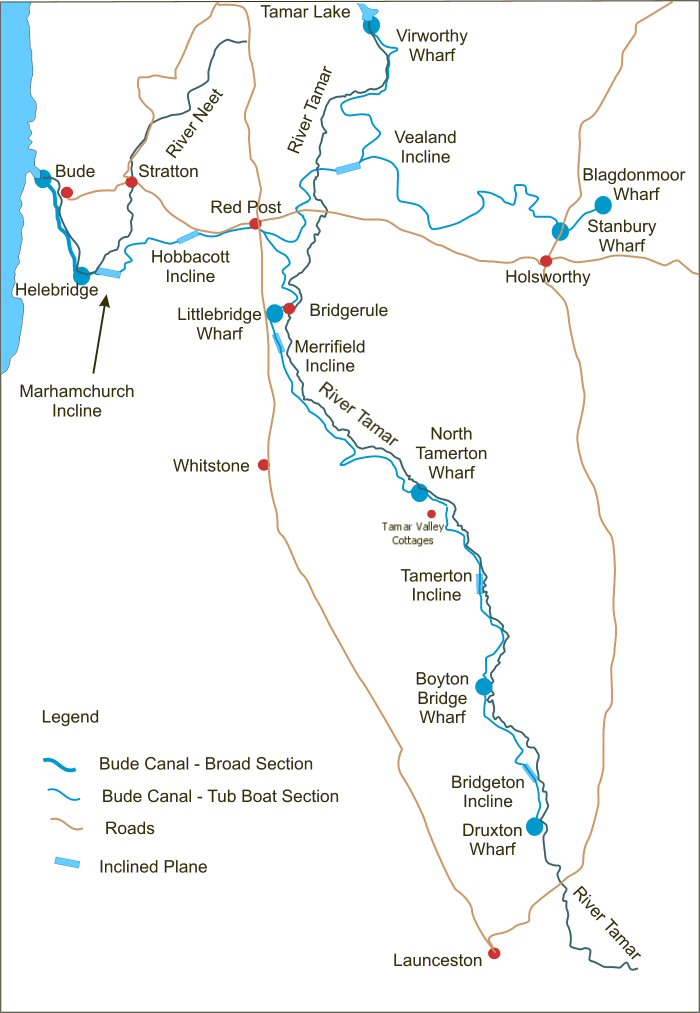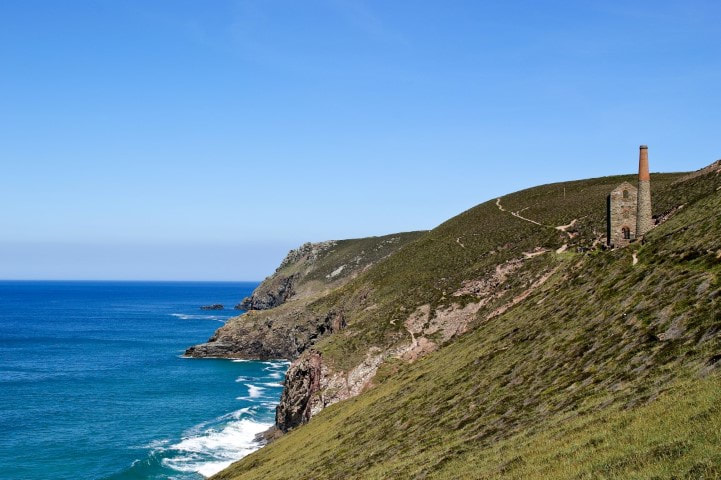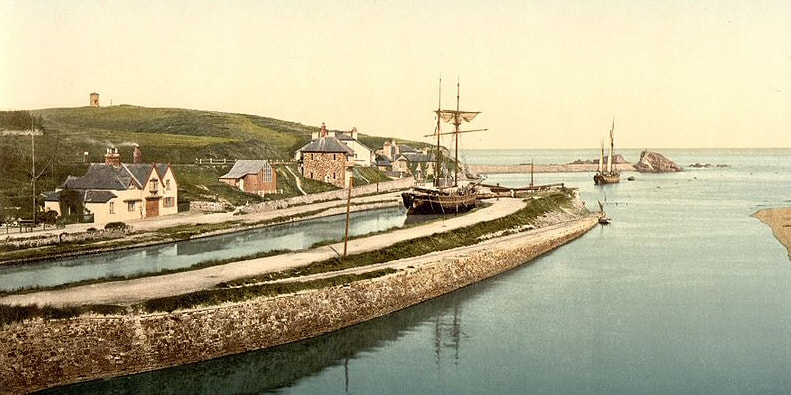These days, Bude canal is a peaceful walk through rolling countryside, but in its hay day was a bustling and busy transport route. In this blog post, we dip into the history and give you some recommendations for a pleasant walk. Any top tips? Let us know in the comments below.

The History
The canal first came about when farmers in the area discovered they could improve their poor, acidic soil by adding lime-rich sand from the coast. With such large quantities in demand, transporting it in any other way would not have been feasible.
The final canal design was proposed in 1819 and was completed by 1823, reaching an impressive 35 miles into the Cornish and Devon border – even more incredible when you realise the entire canal was dug using shovels and pick axes. A new reservoir (now known as Lower Tamar Lake) was built to feed the canal with water.
Long 50-foot coastal barges could travel the 2 miles to Helebridge, where the cargo would be transferred to smaller tub boats, each carrying about 20 tonnes, for the remainder of their journey.
The smaller boats were necessary as the route had to stick to the contours of the land where possible, and therefore was unusually meandering – through much of the route it runs alongside the river Tamar. More unusual still, the canal had to climb more than 130 metres above sea-level, and did so largely without locks (although the canal did use 2).
Instead, it achieved this feat through 6 inclined planes – slopes without water – (one of the most impressive is just outside our village in North Tamerton though sadly not accessible to the public). The tub boats had wheels on the bottom, and would be dragged up two rails on these slopes, pulled by chains and water wheels (or in some cases huge tanks of water lowering into a shaft).
Up to 6 connected tub boats would be hauled by a team of horses, and the boatmen would have the tricky job of steering the boats by adjusting the connection between each one individually.
Despite its engineering ambition, unfortunately the canal wasn’t a massive success. It lasted nearly 7 decades and provided an important service to farmers, but the vast weights of cargo and mechanical systems at the inclined planes meant that various elements were prone to failure – chains would snap, the rails would break, and the system was expensive to maintain.
Eventually, the railway reached Holsworthy and briefly, it looked as though it would improve the canal’s fortunes, as the mineral rich sand could be transported onwards by train.
Inevitably though, the railway extended to Bude. Moreover, mass production of cheaper fertilisers became more common, and this stock could now be transported by train to farmers in the region.
By 1891, the tub boats had ceased operation, and the canal was eventually bought by the council who use the Tamar Lakes to supply water to the local community to this day.
The sea lock at Bude is one of the last remaining examples in the country, and allowed large ships to enter depending on the tide.

The Canal Today
Nowadays, the towpath as far as Helebridge is paved and in good condition, making it a very pleasant and accessible walk, suitable for mobility scooters and pushchairs. You can also hire rowing boats (or some rather garish pedalos) from Bude, along with bikes and even kayaks.
Even better, several establishments offer walkers refreshments, and here are a few of our picks:
- The Lock Gates Tearoom, Bude.
200m from the sea-lock, this is a charming little tea-room with simple but good quality dishes. Great sea-food and plenty to offer gluten-free guests. - The Barge, Bude.
This café on a barge is more than a novelty – serving light meals and cream teas, and it’s even dog-friendly. - The Falcon, Bude.
One of Bude’s oldest and best loved pubs overlooks the canal. Decent pub grub at a reasonable price, and dog-friendly too. - The Olive Tree, Bude.
Just across the canal from the Falcon is the Olive Tree, and very pleasant bistro restaurant and café with excellent food. If the weather is nice enough, try to get yourself a seat outside.
- Get Your Veg On, Bude.
In the crescent car-park you may find the small unassuming yellow hut. Serving a range of vegan, veggie and gluten-free street-food, this is a great idea if you forgot your picnic. - The Weir, Helebridge.
If you manage the full 2 mile stretch of remaining canal, you will find yourself at The Weir Bistro. A large, open plan restaurant and café with plenty of choice. Very popular, and with a wildlife area, play area, and even allowing dogs, you can see why.
To find out more about the Bude canal, pop into Bude Tourist Information Centre, where they have more information including maps and routes.
Click here for a live webcam of the lock gates.




